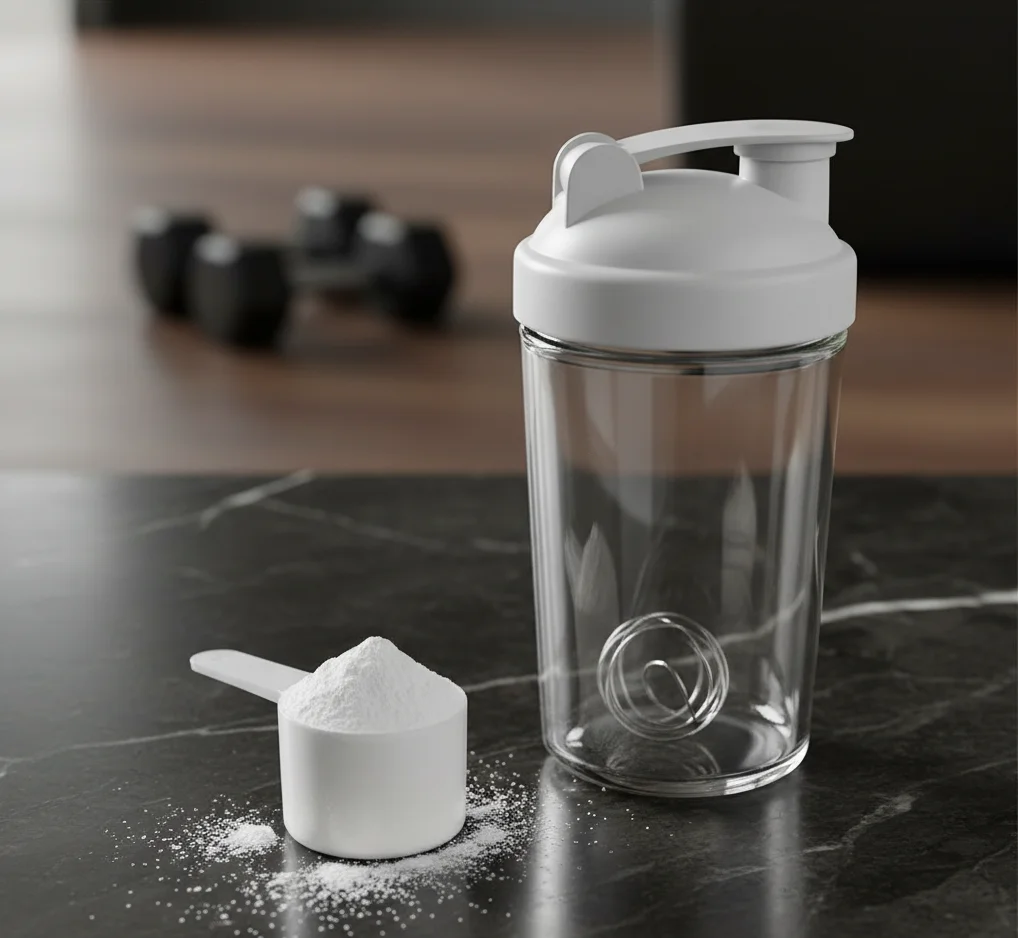Creatine + Training: A Small but Meaningful Boost

Creatine isn't just for bodybuilders - if you lift weights, this little molecule can help you squeeze out extra gains.
The Promise: Creatine Plus Resistance Training Increases Lean Mass and Strength
Creatine is one of the most studied supplements in sports science. It enhances phosphocreatine stores in muscle, enabling more rapid ATP regeneration during intense exercise. A 2024 meta-analysis evaluated how creatine supplementation alongside resistance training influences muscle hypertrophy and strength (PubMed37432300).
Key Findings
Study Scope
The meta-analysis included 10 randomized controlled trials with 44 outcomes involving various populations - young adults, older adults, and trained athletes. This breadth provides confidence that the findings apply across different groups.
Muscle Hypertrophy
Creatine yielded a very small but significant increase in regional muscle hypertrophy (effect size ≈ 0.11) compared with placebo when paired with resistance training (PubMed37432300). While the effect size is modest, it's consistent and meaningful when accumulated over months of training.
Context Matters: An effect size of 0.11 may sound small, but over 8-12 weeks of training, this can translate to an extra 0.5-1 kg of lean muscle mass compared to training without creatine. For serious lifters, these marginal gains compound over time.
Strength Gains
The meta-analysis found an effect on strength, particularly in upper body exercises, though results varied by study. Creatine appears to enhance the ability to perform more total work during training, which drives greater strength adaptations over time.
Age Differences
Younger individuals may experience slightly greater benefits, but credible intervals overlapped in older adults (PubMed37432300). This suggests creatine can benefit lifters across the age spectrum, not just young athletes.
| Outcome | Effect | Practical Impact |
|---|---|---|
| Regional hypertrophy | Small increase (ES ~0.11) | Extra 0.5-1 kg lean mass over 8-12 weeks |
| Strength gains | Positive, varied by study | More total volume and progressive overload |
| Age response | Slightly better in young | Benefits across age groups |
| Safety profile | Excellent in healthy individuals | Long-term use appears safe |
How Much to Take
Loading Phase (Optional)
Some protocols load 20 g/day for 5-7 days, divided into four doses. This rapidly saturates muscle creatine stores but isn't necessary. Loading can cause water retention and digestive upset in some people.
Maintenance Dose (Recommended)
3-5 g/day thereafter. Research shows consistent maintenance dosing yields similar benefits without loading. This approach is better tolerated and just as effective over a few weeks.
Timing
While there's debate about pre- versus post-workout timing, the most important factor is consistent daily intake. Total daily dose matters more than precise timing. Many athletes simply take creatine with a post-workout meal for convenience.
Practical Tips
1. Pair with Training
Creatine works best when muscles are challenged. Don't expect gains from supplementation alone. The supplement enhances your body's response to training stress - it doesn't replace the training itself.
2. Hydrate
Creatine draws water into cells; ensure adequate fluid intake. Aim for an extra 500-1000 ml of water per day when supplementing. This also helps prevent any potential cramping.
3. Quality Matters
Choose products tested for purity; avoid contaminants. Look for:
- Creatine monohydrate (the most researched form)
- Third-party testing (NSF Certified for Sport, Informed-Sport, or USP Verified)
- Minimal additives or fillers
- Micronized formulations dissolve better and may reduce GI upset
4. Cycle or Not?
Long-term use appears safe, but some athletes cycle creatine (e.g., 12 weeks on, 4 weeks off) to reset baseline. Current research doesn't strongly support the need for cycling, and continuous use maintains elevated muscle creatine stores. Cycling is more about personal preference than physiological necessity.
Who Benefits Most?
- Strength and power athletes: Those performing explosive movements or heavy lifting see the clearest benefits
- High-intensity interval trainers: Creatine helps maintain performance during repeated bouts
- Vegetarians and vegans: These groups typically have lower baseline muscle creatine and may respond more dramatically
- Older adults: May help counteract age-related muscle loss when combined with resistance training
- Team sport athletes: Benefits repeated sprint performance and power output
Common Questions and Concerns
Does creatine cause kidney damage?
In healthy individuals, creatine does not harm kidney function. However, those with pre-existing kidney disease should consult a physician before supplementing.
Will I lose muscle when I stop taking creatine?
You'll lose the water weight associated with intramuscular creatine stores (typically 1-2 kg), but not actual muscle tissue you've built through training.
Does creatine cause hair loss?
One study suggested a possible link through DHT increases, but subsequent research hasn't confirmed this. Current evidence doesn't support creatine causing hair loss.
Do I need to take it with carbs?
Carbohydrates may slightly enhance creatine uptake, but it's not essential. Consistency matters more than co-ingestion strategies.
The Verdict: Creatine monohydrate is safe, effective, and affordable. The effect size may be small, but it's one of the few supplements with robust evidence backing its use for muscle growth and strength gains. For anyone engaged in regular resistance training, 3-5 g/day is a low-risk investment that can enhance training adaptations over time.